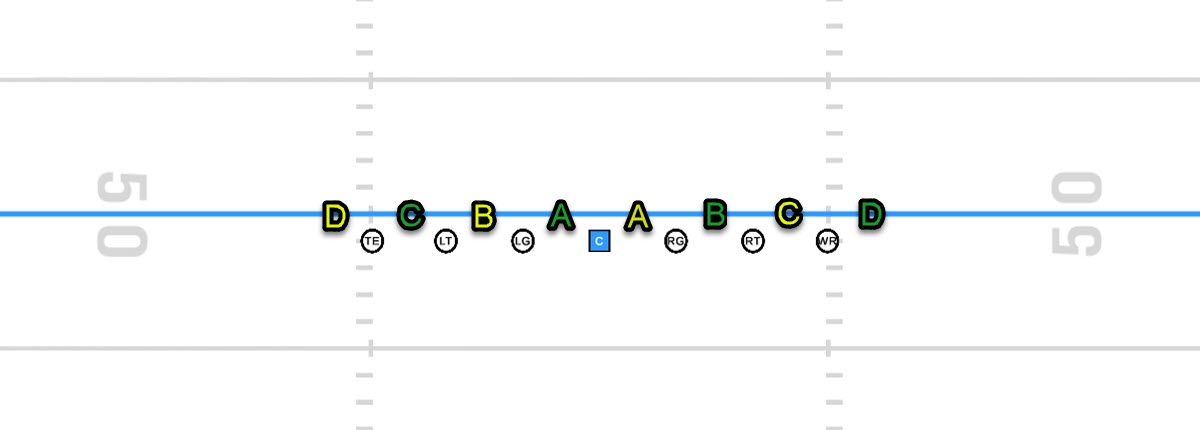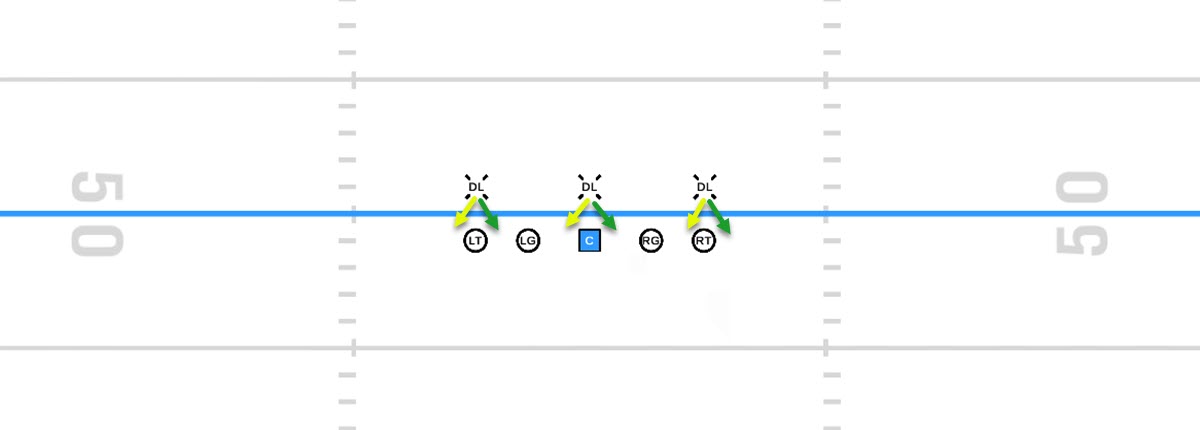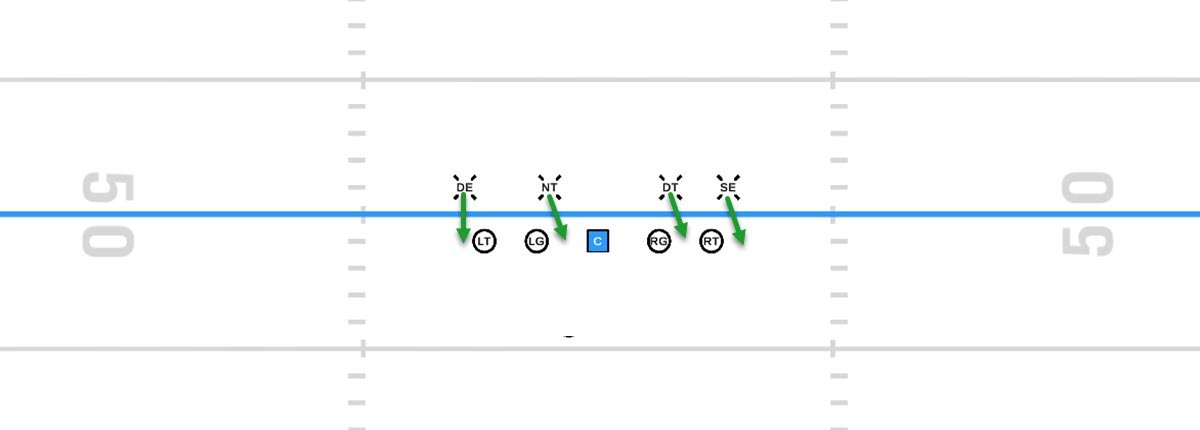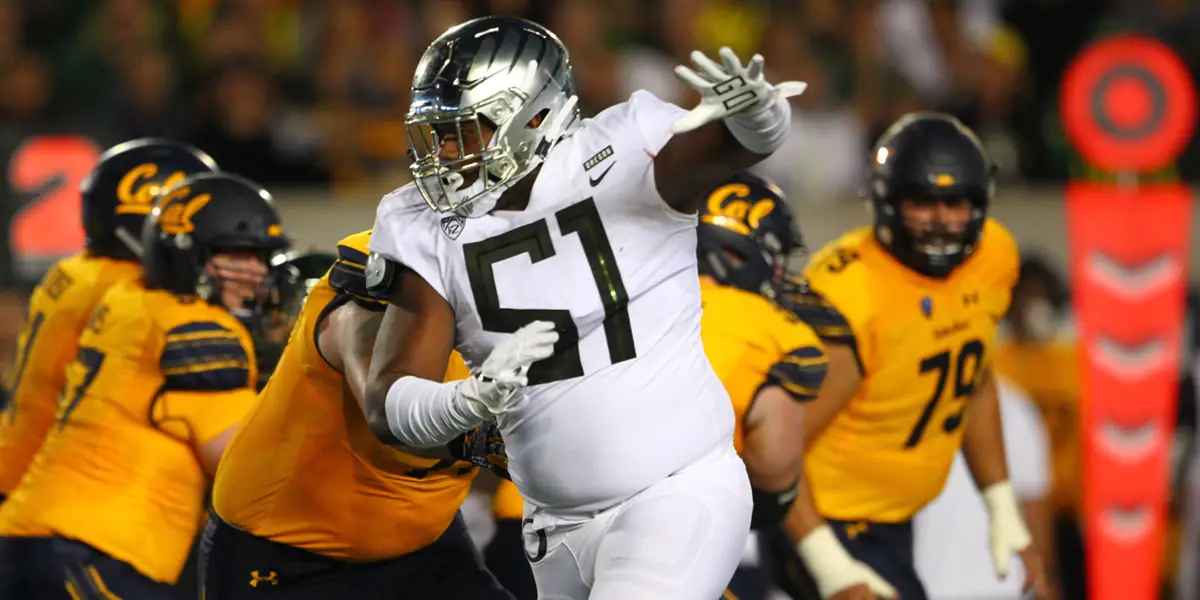When it comes to having a good defense, the number-one priority is usually stopping the run. Defenses like Alabama’s and Clemson’s have won titles by adhering to this basic philosophy. With championship aspirations of its own, Oregon hopes to join the Tigers and the Tide and have a shutdown run defense in 2019. Here’s how the Ducks will be trying to accomplish that under new defensive coordinator Andy Avalos.
As far as run defense is concerned, defenses all across football use one of two different gap techniques. These techniques are known as one-gap and two-gap. The latter was utilized by the departed Jim Leavitt in his 3-4 defense, and the former is what Avalos has brought with him to Eugene.

Line Gap Diagram
Please refer to the above diagram for reference regarding the different gaps along the line of scrimmage. The “A-gaps” are the gaps to either side of the center. The “B-gaps” are the gaps between the guards and the tackles, etc.

Two Gap Diagram
First, let us discuss two-gap technique (shown above). This is a style of run defense Oregon has utilized in more recent years, under Nick Aliotti, Don Pellum and Leavitt. At its core, two-gapping is more of a reactionary technique than an attacking one.
The defensive linemen are tasked with engaging their respective offensive lineman, and then reading the blocking scheme and backfield of the offense. Once the defensive linemen have diagnosed what the offense is doing, they can pick the gap to either the left or right of the offensive lineman. But ultimately, they are responsible for both gaps.
In the video above, you’ll easily notice all three DL using a two-gap technique. But, let’s focus on Jordon Scott (No. 34) at nose tackle. He engages with the center here, diagnoses the inside zone and sheds the block, penetrating the backside A-gap to stop the RB for a loss.

One Gap Diagram
In contrast, Avalos prefers the one-gap technique (see diagram above). Like everything else about the new Duck defense, this technique is more aggressive. Where two-gap requires defensive linemen to react to the offense, one-gap allows them to attack the offense.
With this technique, defensive linemen are given, quite literally, one gap they are responsible for. They attack that gap as quickly and aggressively as possible at the snap of the ball, without getting too far up the field and overshooting the play. Where two-gapping looks to engage with the offensive line, one-gapping is looking to do one thing: get into the backfield and disrupt.
In the video above, it is again easy to see the technique being used by all four defensive lineman. But, pay close attention to No. 55 in blue as he blasts into the backfield and stops the RB for a loss. There is no hesitation at the snap. He splits the B-gap between the left guard and left tackle, giving the play absolutely no chance.
Anything that makes a defense more aggressive is right up my alley, and one-gapping definitely allows the defensive line to play a more aggressive game. I cannot wait to see this one-gap technique wrecking the rest of the Pac-12 this season.
Coach Eric Boles
Newark, Ohio Top Photo Credit: Asan Awan
 Spencer Thomas, the FishDuck.com Volunteer Editor for this article, is an attorney for the Social Security Administration in Atlanta, Georgia, and coaches High School Football for Hillgrove HS in Powder Springs, Georgia.
Spencer Thomas, the FishDuck.com Volunteer Editor for this article, is an attorney for the Social Security Administration in Atlanta, Georgia, and coaches High School Football for Hillgrove HS in Powder Springs, Georgia.
Eric resides in Central Ohio, just outside the capital city of Columbus. He is a former offensive assistant and return game coordinator for the Ohio State – Newark/Central Ohio Technical College Titans football program.
He is an OSU-N graduate, having completed a Bachelor of Arts program in psychology.

